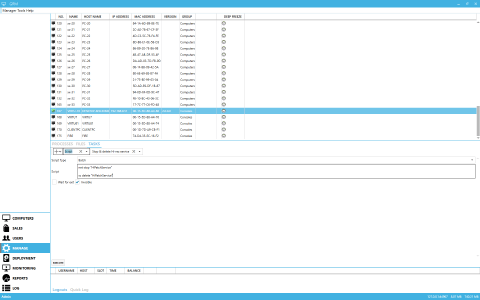


For example, if a server slows down noticeably between 2:40 A.M. For instructions about how to do this, see Help in Performance Monitor.Īlso, you can use the Schedule service and the AT command to schedule monitoring to occur at a set time. To stop the monitoring process, type the following command, and then press ENTER: monitor \\remotecomputer stopĪfter you stop the monitoring process, you can view the log file in Performance Monitor. To start the monitoring process, type the following command, and then press ENTER: monitor \\remotecomputer start Where filename is the name of the workspace file you copied to the remote computer. To use the workspace file for logging, type the following command, and then press ENTER: monitor \\remotecomputer filename It means that you have already run the command once. If you receive the following error message: You need to run the command only once for each computer you want to monitor. This command registers the service with Windows NT Server 4.0. pmw extension, and then click Save.Ĭopy both the workspace file you just created and the Datalog.exe file included with the Windows NT 4.0 Resource Kit to the %SystemRoot%\System32 folder on the remote computer.Īt the local computer, set up the Data Logging service for the remote computer:Īt the command prompt, type the following command, and then press ENTER: monitor \\remotecomputer setup In the File Name box, type a workspace file name using the.On the File menu, click Save Workspace.Click one of the logging interval options, and then click.In the File Name box, specify a name for the log file using the.Add the relevant counters, specifying all objects you want to log and the alerts you want to generate.Start Performance Monitor, and then click Log on the.Install the Windows NT 4.0 Resource Kit on the remote computer.Īt the local computer, use Windows NT Performance Monitor (Perfmon.exe) to create a workspace file: In the following steps, replace with the name of the computer that you want to monitor.


 0 kommentar(er)
0 kommentar(er)
